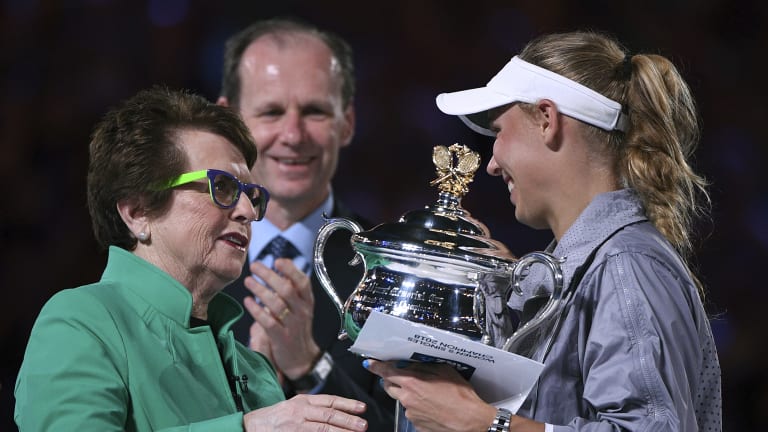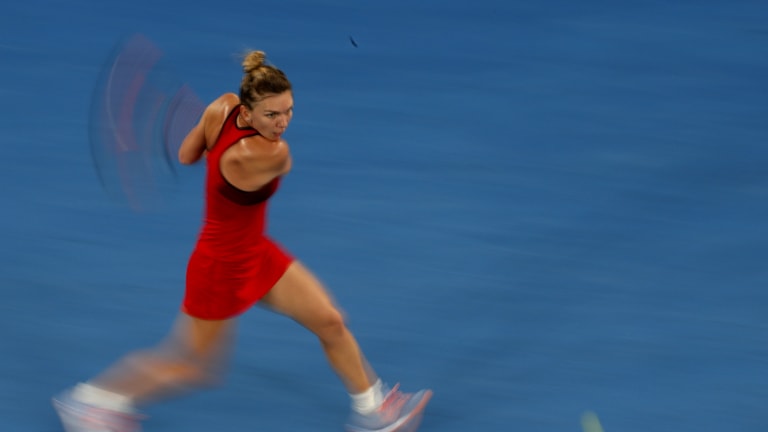MELBOURNE—As the top two ranked players in the world, Simona Halep and Caroline Wozniacki, entered Rod Laver Arena Saturday night to play the Australian Open final, all were aware of how binary and stark the certain outcomes were. For one, an answer cherished. For another, a question continued. That each is likeable, dedicated and quite persistent—each had faced match points this tournament, Halep in two separate matches—made what was to happen that much crueler to absorb.
But happen it did: ecstasy for one, agony for another. Over the course of one sultry Melbourne evening, Wozniacki had earned her first Grand Slam title and returned to the No. 1 ranking nearly six years to the day when she’d last held that spot. It had lasted eleven minutes shy of three hours, the 27-year-old Dane rallying from a break down in the third—Halep had served at 4-3—to win the last three games and ten of the last 14 points. Wozniacki had won, finally, 7-6 (2), 3-6, 6-4.
Near midnight, in the vastly empty player’s lounge, Wozniacki’s father and lifelong coach, Piotr, sat at a table with friend, conducting less of an overt celebration and more a peaceful moment of contentment. Piotr had just shaken hands with Billie Jean King, winner here 50 years ago, on hand this evening to award the trophy to the champion.
King was buzzing as only she can. “What a great match that was,” she said. “What an incredible pair of competitors those two are. It really was one of those matches where it’s a shame someone had to lose.”

